Nestled in the heart of Sapa, Muong Hoa Valley offers a unique blend of stunning rice terraces, vibrant ethnic villages, and majestic mountain views. Travelers can wander through the lush landscapes, where each season paints the fields in different hues, and engage with the local Hmong, Giay, and Red Dao communities, who share their rich cultural heritage. It’s not just about the scenery; the valley serves up a variety of culinary delights that reflect its diverse traditions. As one contemplates the best times to visit, the valley’s hidden gems and local experiences beckon for exploration.
Key Points
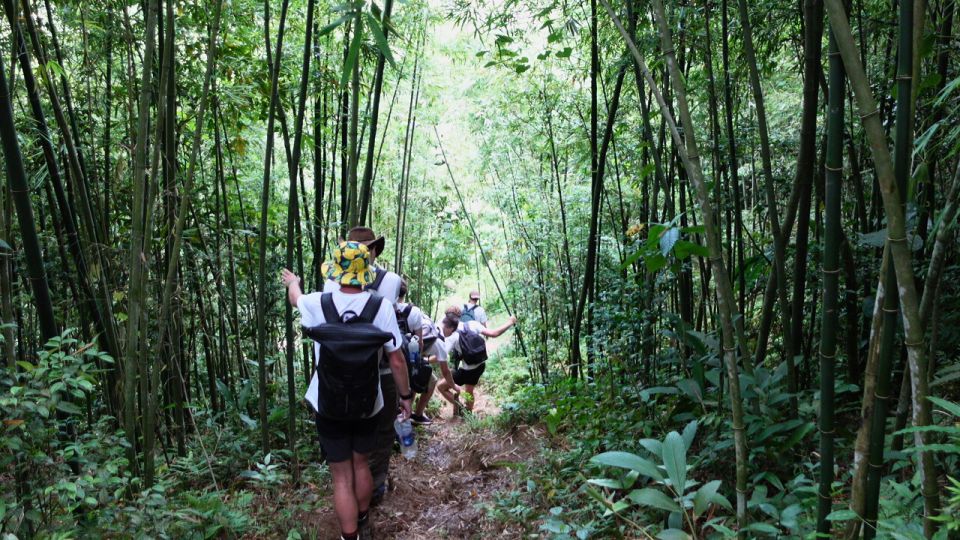
- Muong Hoa Valley features stunning rice terraces that create breathtaking landscapes, especially during early morning mist.
- The valley is home to diverse ethnic villages, including Hmong, Giay, and Red Dao, offering culture.
- Scenic trekking routes lead through bamboo forests and past waterfalls, perfect for capturing picturesque mountain views.
- Local cuisine highlights, such as Thang Co and Com Lam, reflect the rich heritage of the valley’s communities.
- Visitors can engage in traditional village activities, enhancing their experience of the local culture and lifestyle.
It's also worth checking out some other tours and experiences nearby.
Overview of Muong Hoa Valley
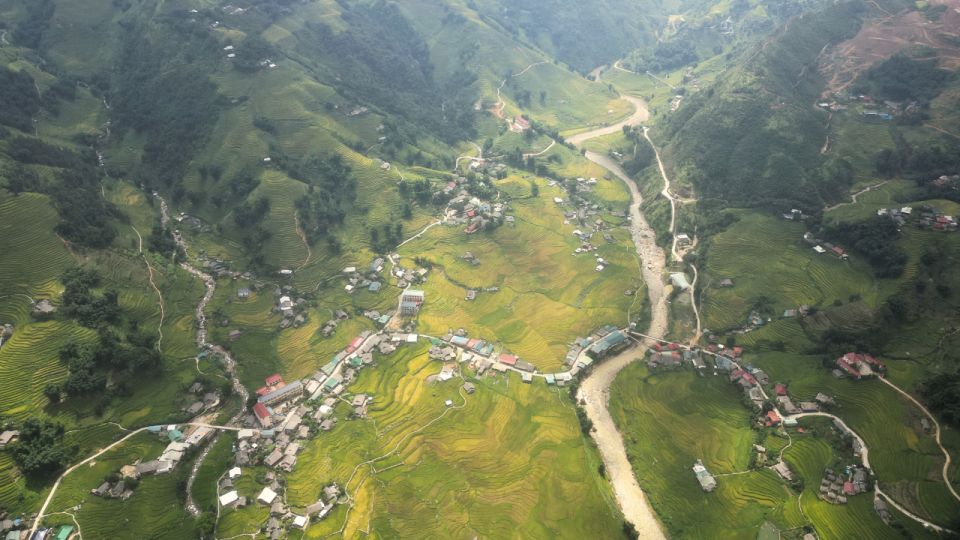
Nestled in the breathtaking landscapes of Sapa, Vietnam, Muong Hoa Valley offers travelers a unique blend of stunning natural beauty and rich cultural experiences.
This two-day tour, starting from £61.83 per person, includes pickup from your hotel, making it convenient for anyone eager to explore.
Travelers can enjoy local cuisine, featuring meals at traditional Hmong family restaurants, and experience the warmth of local hospitality.
The itinerary includes visits to five ethnic villages, showcasing the diverse cultures of the Hmong, Giay, and Red Dao people.
With a free cancellation policy up to 24 hours in advance, planning your adventure in Muong Hoa Valley becomes a hassle-free experience, allowing for spontaneous exploration in this picturesque region.
Scenic Trekking Experiences
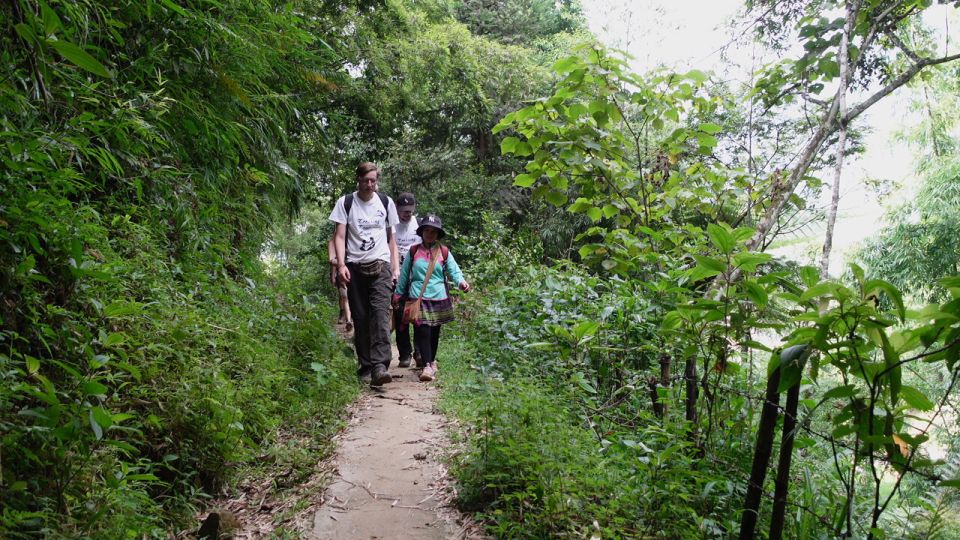
Travelers will find that the scenic trekking experiences in Muong Hoa Valley offer breathtaking views of rice terraces, lush bamboo forests, and cascading waterfalls, making each hike a memorable adventure.
Starting the trek early in the morning allows them to savor the mist rising over the fields. While navigating the trails, they should wear sturdy, waterproof shoes for comfort and stability.
Along the way, local guides provide insights into the flora and fauna, enhancing the experience. Stopping for lunch at a Hmong family restaurant not only satisfies hunger but also fosters connections with the local culture.
Lastly, keeping a camera handy captures the stunning landscapes, ensuring memories last long after the journey ends.
Cultural Exploration Opportunities
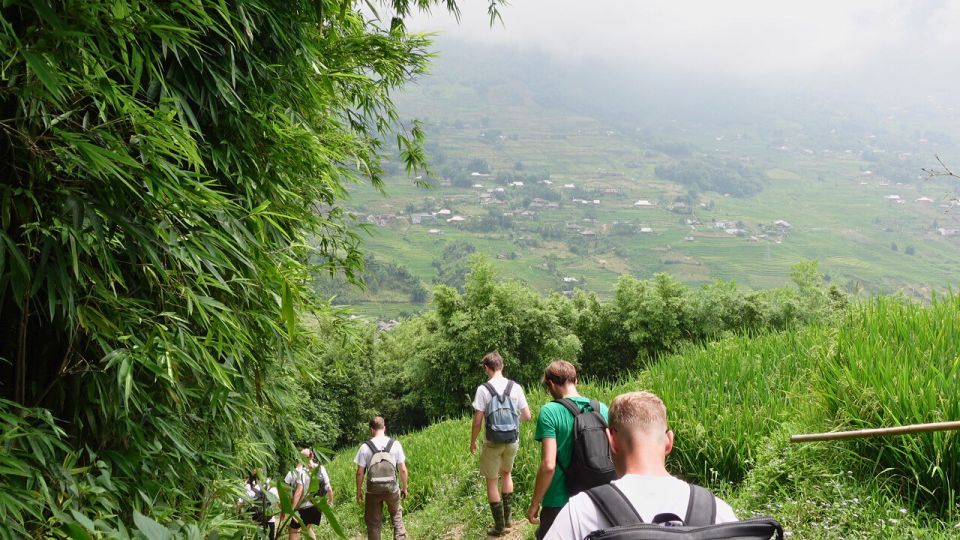
Exploring the rich cultural tapestry of Muong Hoa Valley opens up unique opportunities to connect with the Hmong, Giay, and Red Dao communities through their traditional villages and vibrant local customs.
Visitors can engage in meaningful interactions by participating in village activities, such as weaving or crafting, which helps preserve these artisans’ age-old traditions.
Walking through the villages provides a firsthand look at daily life, allowing travelers to witness colorful festivals and rituals.
It’s also a chance to learn about herbal medicine from local healers, giving insight into their holistic practices.
Those interested should consider taking a guided tour for deeper immersion and understanding, ensuring they respect local customs while enjoying this cultural exploration.
Local Cuisine Highlights
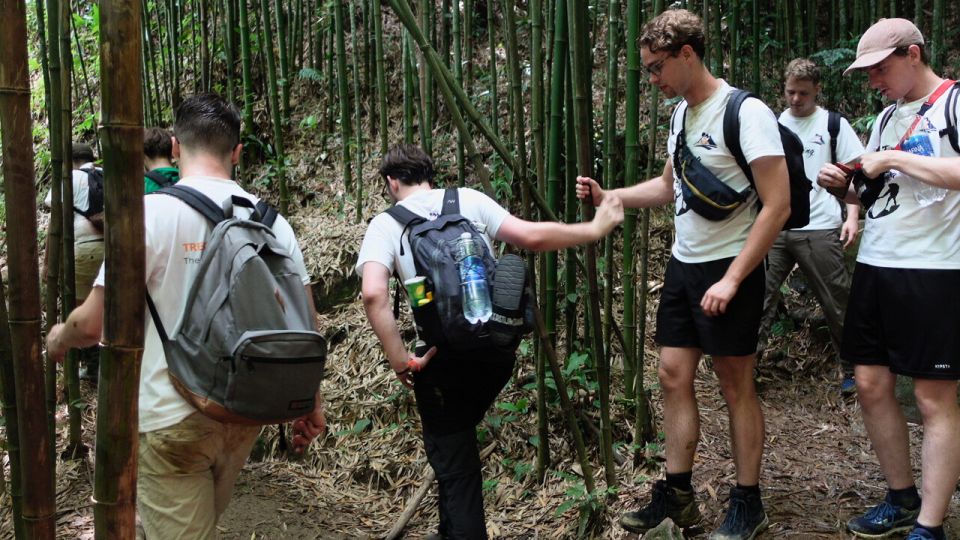
Engaging with the local communities in Muong Hoa Valley naturally leads to savoring the region’s unique and delicious cuisine, which reflects the rich cultural heritage of the Hmong, Giay, and Red Dao people. Visitors can enjoy delightful dishes made from fresh local ingredients, often prepared in traditional ways.
| Dish | Description | Recommended Spot |
|---|---|---|
| Thang Co | A savory soup made with horse meat and herbs | Hmong family restaurants |
| Com Lam | Sticky rice cooked in bamboo tubes | Local markets |
| Nem Chua | Fermented pork rolled in banana leaves | Street vendors |
Trying these dishes provides an authentic taste of the valley’s culture. Don’t hesitate to ask locals for their favorite spots to eat; their recommendations often lead to hidden culinary gems!
Detailed Itinerary Breakdown
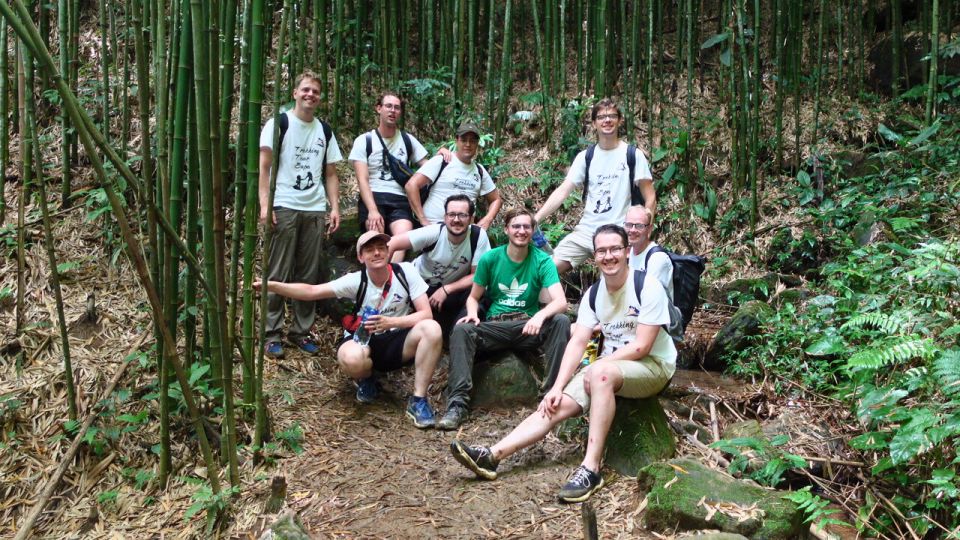
The itinerary for the Muong Hoa Valley tour offers a perfect blend of scenic trekking and culture, ensuring participants experience the breathtaking landscapes and rich traditions of the region over two enriching days.
On Day 1, trekkers cover 14 km to Ta Van, stopping at Cat Cat village and crossing a hanging bridge. A traditional Hmong lunch awaits before an overnight homestay, where guests can join a cooking class if they wish.
Day 2 begins with breakfast and leads to an 8 km trek to Giang Ta Chai waterfalls, visiting the Red Dao community along the way. After a satisfying lunch in Giang Ta Chai, participants head back to Sapa, concluding their unforgettable adventure around 15:00.
Inclusions of the Tour
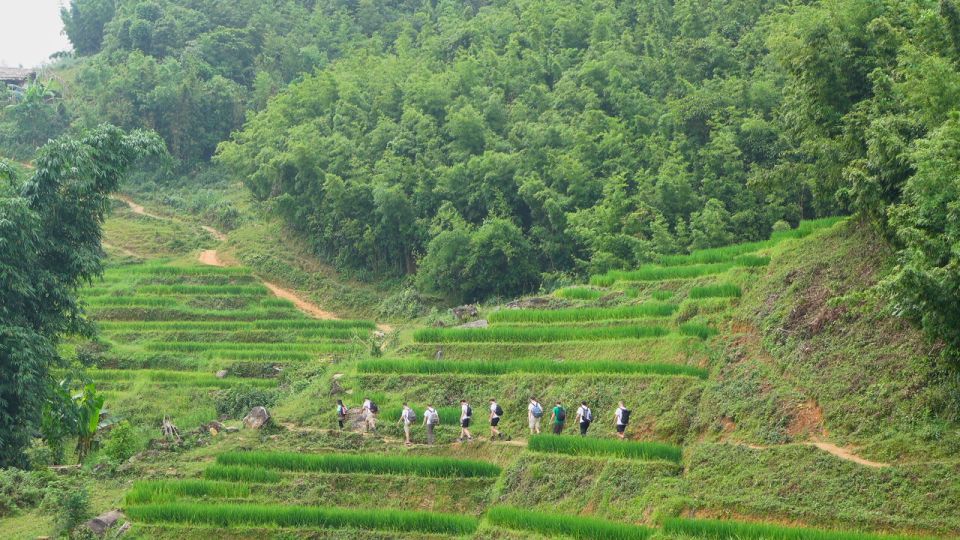
Participants can look forward to a well-rounded experience with several inclusions that enhance their journey through Muong Hoa Valley. Each tour package provides one breakfast, two lunches, and one dinner, allowing participants to savor authentic local cuisine.
Travelers can enjoy a night in a homestay, seeing the community’s culture. An English-speaking guide is included to share insights about the rich heritage of the Hmong, Giay, and Red Dao people.
Plus, village entry fees and one bottle of water per person are covered, ensuring convenience throughout the trek. Finally, transportation back to Sapa is arranged, making the overall experience seamless and enjoyable.
This thoughtful planning allows participants to focus on the beauty surrounding them.
Important Travel Information
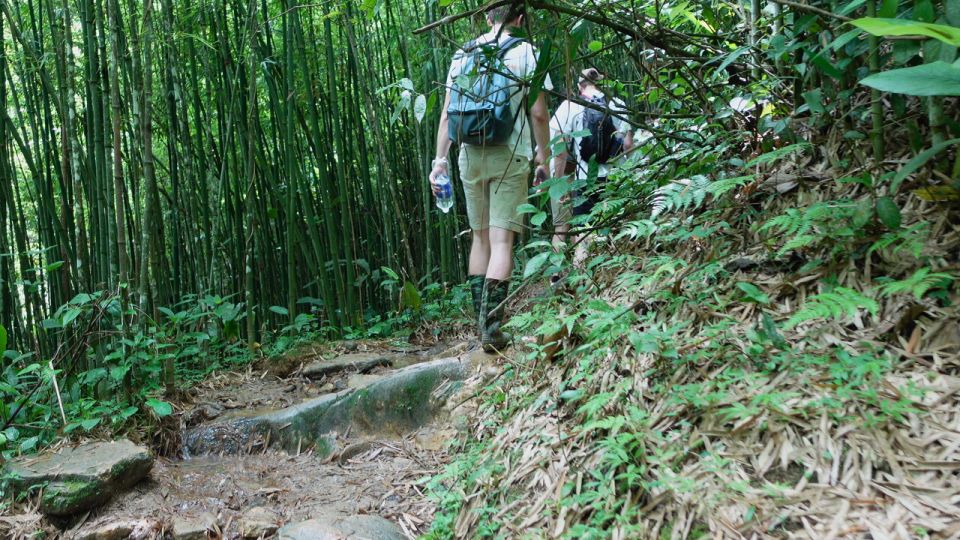
When planning a trip to Muong Hoa Valley, travelers should keep in mind several important travel tips to ensure a smooth and enjoyable experience.
First, they should pack essentials like sunscreen, insect repellent, and waterproof shoes, as the weather can be unpredictable. It’s wise to bring cash for local purchases, as many places don’t accept cards.
To avoid hassles, leaving larger luggage at their hotel is recommended, allowing for easier trekking. Remember that alcohol and drugs aren’t allowed during the excursion.
For those traveling from Hanoi, assistance with bus or train tickets can be arranged. Lastly, engaging with local guides provides invaluable insights into the culture and environment, enhancing the overall experience.
Tips for Visiting Muong Hoa Valley
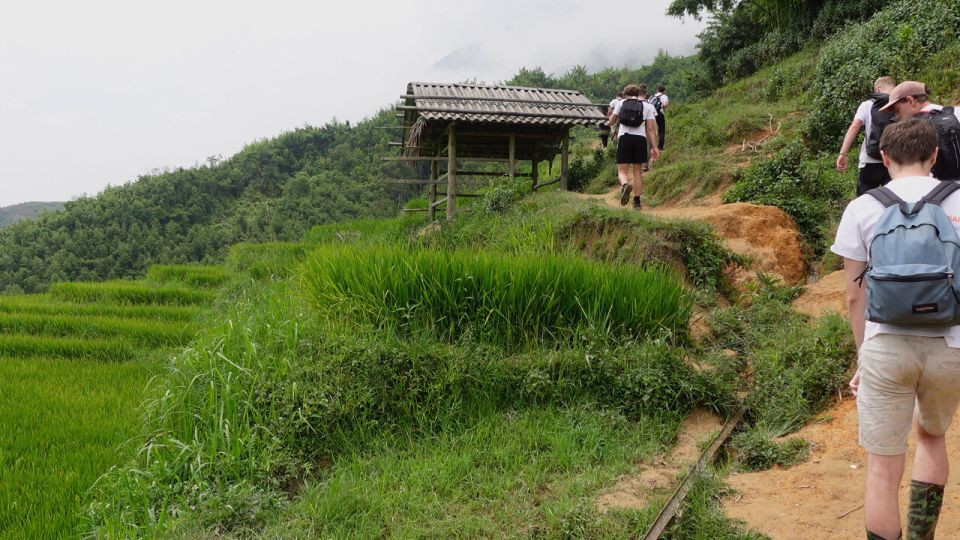
Packing light is essential for a comfortable trek through Muong Hoa Valley, allowing travelers to fully enjoy the stunning landscapes without the burden of heavy luggage.
To make the most of their visit, they should keep a few practical tips in mind:
-
Wear waterproof shoes for muddy paths.
-
Bring insect repellent to ward off pesky bugs.
-
Carry a reusable water bottle to stay hydrated.
-
Use sunscreen to protect against the sun’s rays.
-
Keep cash on hand for local purchases and village fees.
Here's a few more nearby tours and experiences we think you'll like.
- From Hanoi: Sapa 3 Days 2 Nights With Trekking Village
- Sa Pa: The Roof of Indochina – Fansipan Hiking Full-Day Trip
- From Sa Pa: 5-Hour Muong Hoa Valley Trek and Ethnic Tribes
- From Hanoi: 2-Day 2-Night Sapa Tour by Overnight Train
- From Sapa: 1-Day Guided Trek to Lao Chai & Ta Van With Lunch
- Sapa: Sapa Mountain View And Villages Trek
Frequently Asked Questions
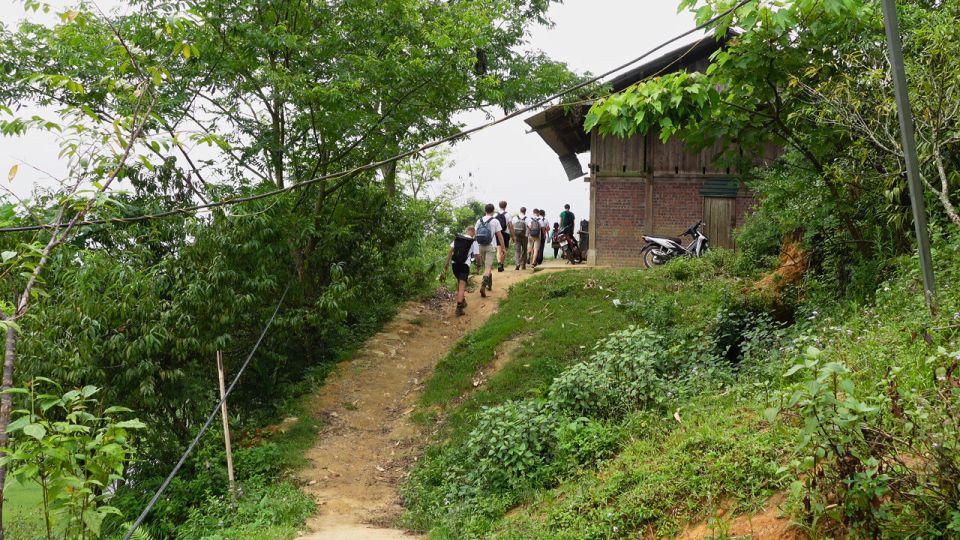
What Is the Best Time to Visit Muong Hoa Valley?
The best time to visit is from September to November. During these months, the weather’s pleasant, and the rice fields turn golden, offering breathtaking scenery. Tourists enjoy clear skies and vibrant landscapes, perfect for exploration.
Are There Age Restrictions for Participants on the Tour?
The tour’s age restrictions state it’s not suitable for babies under one year or individuals over seventy. Participants should consider their physical fitness, as trekking can be challenging, regardless of age.
Can Dietary Restrictions Be Accommodated During Meals?
When it comes to dietary restrictions, travelers should inform the guide in advance. They’ll ensure that meal options cater to individual needs, allowing everyone to enjoy the delicious local cuisine without worries.
How Physically Demanding Is the Trekking Involved?
The trekking’s moderately demanding; participants navigate steep paths and rugged terrain. It’s essential to wear sturdy shoes and stay hydrated. Those in decent shape can enjoy the journey and stunning scenery without excessive strain.
Is It Safe to Travel Alone in Muong Hoa Valley?
Traveling alone in Muong Hoa Valley’s generally safe, but it’s wise to stay aware of surroundings. Locals are friendly, yet sticking to well-trodden paths and respecting cultural norms enhances safety and enriches the experience.
Not for you? Here's more of our most recent tour reviews happening neaby
- From Hanoi: Sapa 2 Days 1 Night Trekking With Local People
- From Sapa: 2D1N Sapa Trekking Tour With Local Expert
- A Day Fansipan Trekking
- Sapa Trekking Tour for 2D1N (Lao Chai – Ta Van – Cat Cat )
- Sapa: Fansipan 2D1N With Local Experts
- From Hanoi: 2 Day Sapa Trekking To Village & Bungalow
- Fansipan Trek One Day Tour – Roof Of Indochina
- Sapa: Fansipan 1 Day Trip With Local Experts
- Mountain Views & Muong Hoa Valley Experience
- From Hanoi: Sapa 2 Day 1 Night At Sapa Retreat Condotel
- Hanoi: Sapa Trekking 2 Days 1 Night – Sleeper Bus From Hanoi
- Exploring All Ethinc Villages In Muong Hoa Valley By Trek
- Private Transfer Hanoi/ Noi Bai Aiport to or From Sapa
- From Hanoi: 2-Day Sapa Trekking & Hiking With Fansipan Peak
- Sapa 3 Days 2 Nights Trekking Tour
Recap
To sum it up, Muong Hoa Valley offers a captivating blend of natural beauty and rich culture.
Travelers should take advantage of the scenic trekking routes, enjoy the vibrant local communities, and savor the delicious regional cuisine.
With its stunning rice terraces and welcoming villages, this destination promises unforgettable experiences.
To make the most of the visit, travelers should plan ahead, respect local customs, and be ready to embrace the charm of this enchanting valley.
